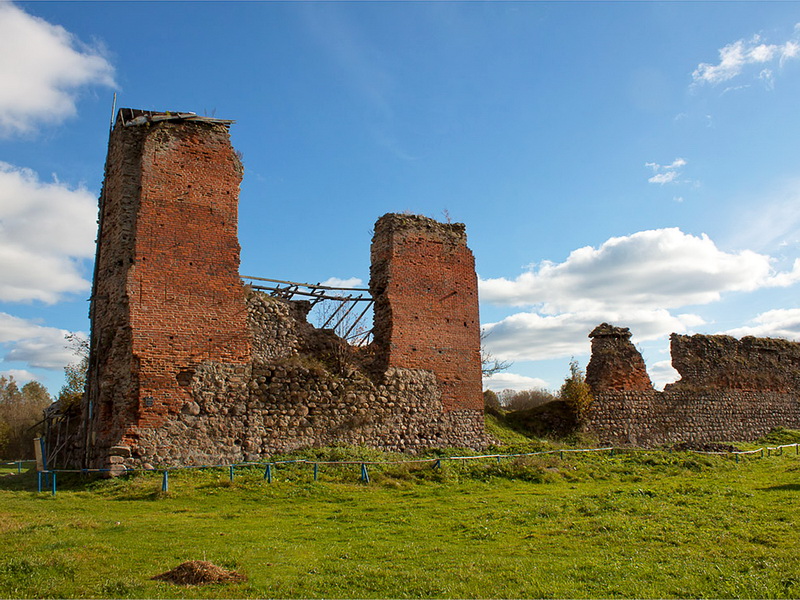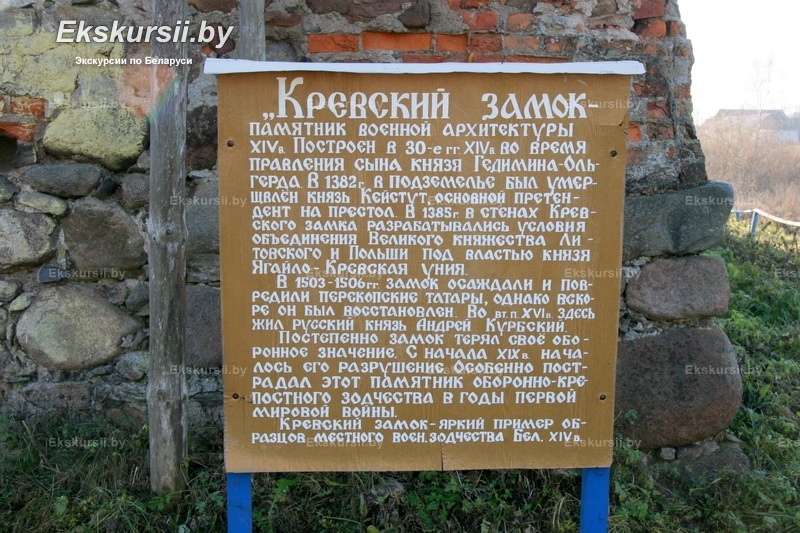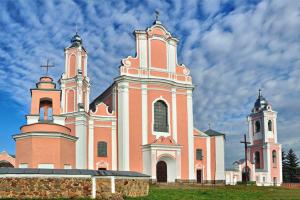History
The exact date of the castle’s foundation is still debated by researchers. Some place its construction at the end of the 13th–beginning of the 14th century, others — in the mid-14th century. Nevertheless, Kreva Castle is considered the first stone fortification on the territory of modern Belarus. Fateful events took place within its walls: the famous dynastic union — the Union of Kreva of 1385 — was concluded here, joining the Grand Duchy of Lithuania and the Kingdom of Poland. It was also here that the tragic fate of Duke Kęstutis came to an end — he was strangled by order of Jogaila.
Architecture
The shape of the castle resembles an irregular trapezoid (castellum). It was built on a natural island formed by the overflows of two rivers — the Krevyanka and the Shlyaktyanka. The walls, up to 13 meters high, were made of rough stone and partially faced with brick. A wooden gallery with loopholes ran along the inside. In 2021, a major milestone was reached — the northeastern wall was conserved, sections near the Ducal Tower were restored, and the Main Gate was reconstructed. Thanks to these efforts, the castle has been reopened to tourists. Originally, the castle had two towers, but in the summer of 2023, archaeologists discovered the foundation of a third one — a discovery that changed our understanding of its layout. The best-preserved is the massive Ducal Tower, which served both residential and defensive purposes; its lower level housed a prison with a secret passage inside the wall.
Excursions
An excursion from Minsk to Kreva Castle is a journey following the footsteps of grand dukes, battles, and dynastic intrigues. We offer not only group tours with experienced guides but also individual excursions to Kreva and nearby historic locations tailored to your preferences and interests. This format is especially convenient for those who wish to immerse themselves in the castle's atmosphere without haste, and to discover additional lesser-known landmarks of the region.





